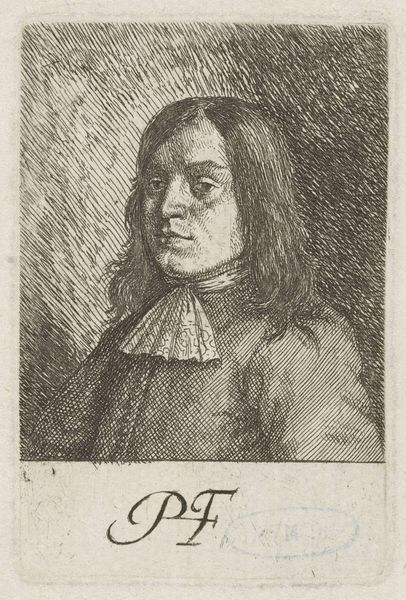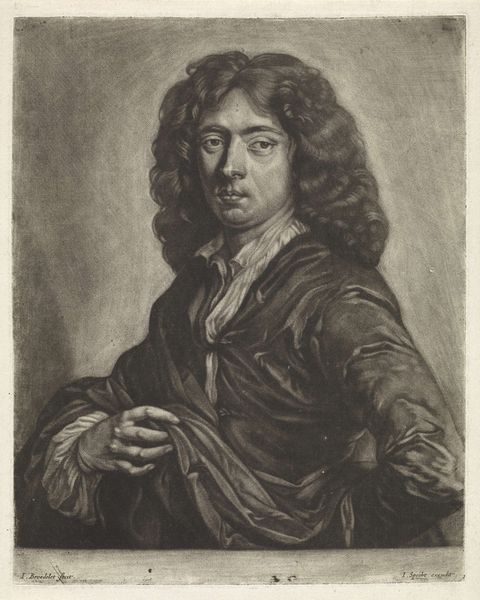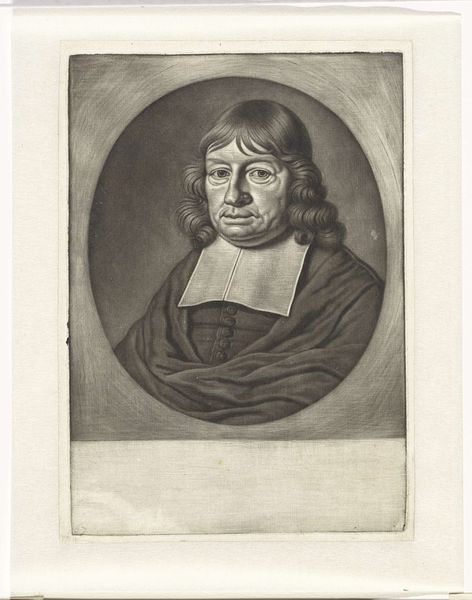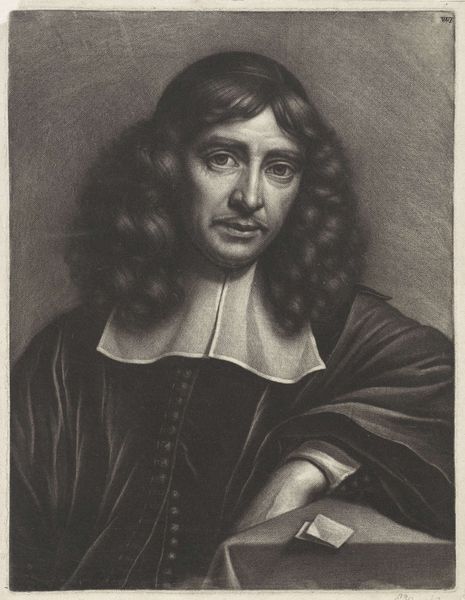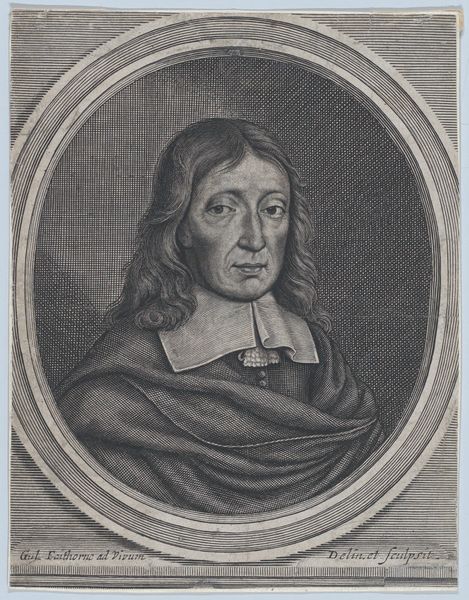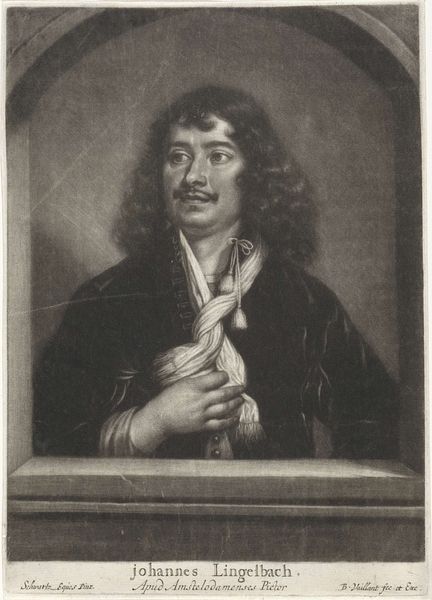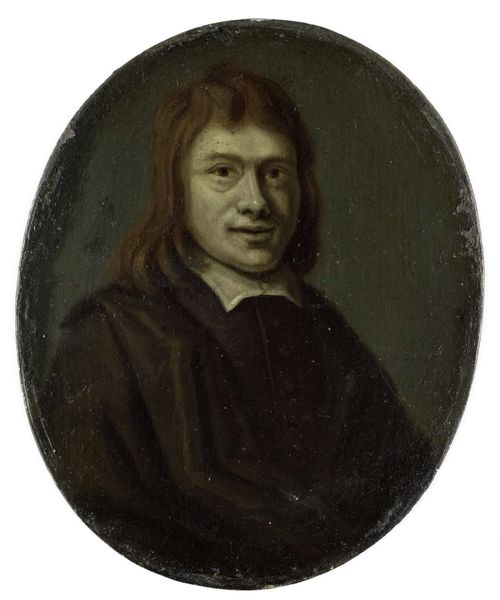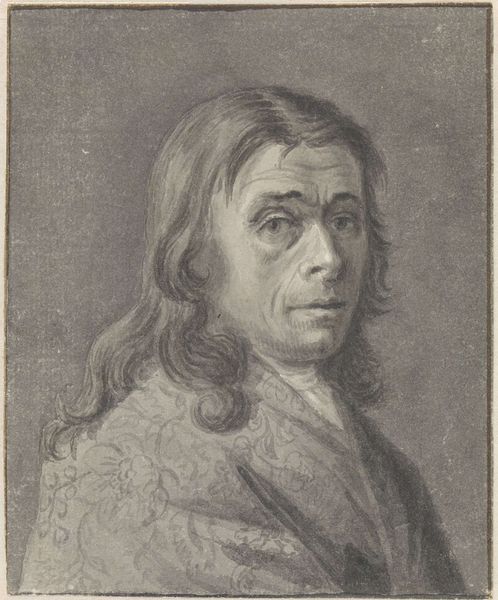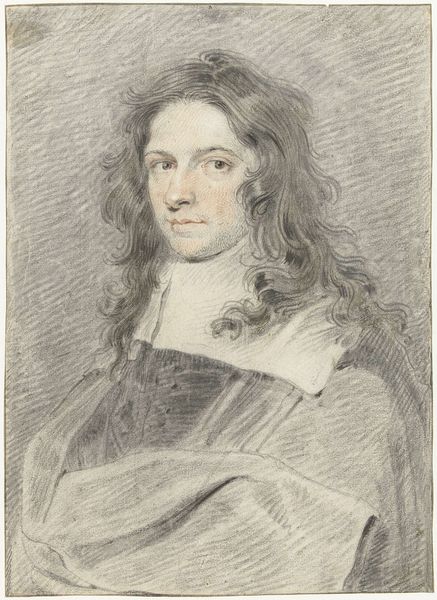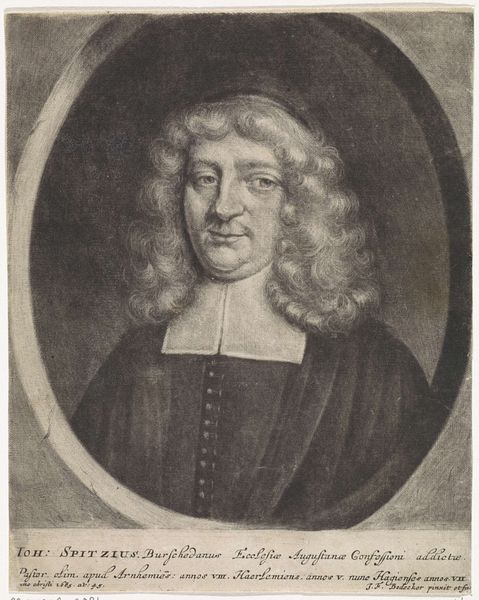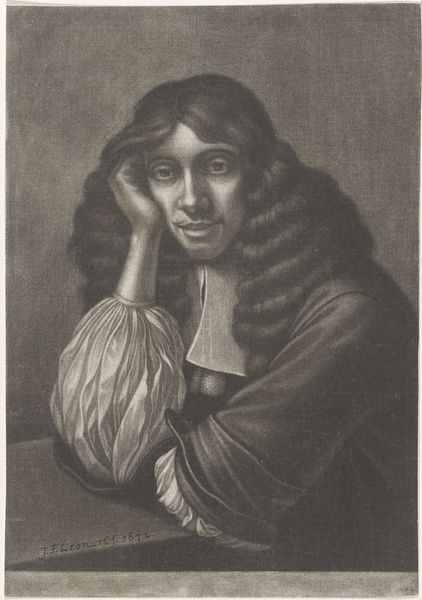
drawing, charcoal
#
portrait
#
drawing
#
baroque
#
charcoal drawing
#
charcoal
Dimensions: height 84 mm, width 76 mm
Copyright: Rijks Museum: Open Domain
Johann Friedrich Leonard created this self-portrait in the 17th century, working in etching - a printmaking process involving acid and metal. Look closely, and you’ll see that the image is made up of many tiny etched lines that create the tones and textures we see. The artist would have coated a metal plate with a waxy, acid-resistant substance, then drawn his image into the wax with a sharp needle. Immersing the plate in acid would bite away the exposed metal, leaving behind incised lines. Ink is then applied into these lines and transferred to paper. Notice how Leonard uses closely spaced lines to create areas of shadow, like in his hair, and more widely spaced lines for the lighter areas. The fineness of the lines and the control of the etching process allowed the artist to capture intricate details. In the 17th century, printmaking was an essential skill for artists, allowing them to reproduce and distribute their work. It collapses the distinction between fine art and a more democratic form of image-making, allowing for the wider circulation of portraits like this.
Comments
No comments
Be the first to comment and join the conversation on the ultimate creative platform.


